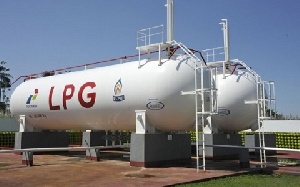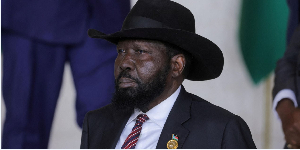Intro: At the Cabinet meeting of 12th October 2017, the President of the Republic, on the advice of Cabinet, directed that henceforth the Cylinder Recirculation Model of Liquefied Petroleum Gas (LPG) distribution be implemented. This model means that LPG Bottling Plants will be sited away from congested commercial and population centers and will procure, brand, maintain and fill empty cylinders to be distributed to consumers and households through retail outlets. Low risk stations will be designated for the supply of gas to vehicles. This whole exercise must be completed within one year.
Details:
What is it about?
Answer: the model involves filling of LPG cylinders at designated refilling plants before onward distribution to customers at retail outlets called exchange points.
How does the consumer(s) get the products?
Answer: The consumer exchanges his/her empty cylinder with a filled one at the exchange point.
What happens to existing LPG stations?
Answer: Existing stations will be classified into low and high risks based on their deficiency in meeting required safety standards in an ongoing NPA’s Risk Assessment.
Those found to be high risk will be converted into filled cylinder retail and distribution outlets, and those found to be low risk dedicated to the supply of autogas only but with improved safety standards.
What happens to de-commissioned high risk filling stations?
Answer: they will be adequately compensated after an assessment has been thoroughly carried out by a qualified asset valuation expert.
Who are the main actors in the Value Chain process?
Answer: It will involve an LPG Bulk Distribution Company (BDC) whose priority will be to either import or buy the product from a local refineries/gas processing plants into their bulk storage facility. The BDC will then sell the bulk LPG to the LPG Bottling processing plants who will be responsible for procuring, branding, and maintaining the cylinders. The processing plant will fill the empty cylinders and sell the product in bulk to LPG Distribution Companies (LDC). The LDC’s will then proceed to retail and distribute the product to consumers and households.
The LDC’s will also have the opportunity to supply the product to mini-power plants, restaurants, factories, using the Bulk Road Vehicles (BRVs).
How does the NPA ensure there will be no monopoly in the exercise?
Answer: The NPA will ensure that those who are licensed to operate in one category of the value chain are not allowed to operate in another category.
Does this policy mean existing players (LPGMCs, LPG Dealers and Tanker Drivers) are going to be pushed out of business?
Answer: Regarding their current operations, LPGMCs can transition into LDCs but should they decide to acquire an LBDC license, LBP, they will not be given the opportunity to operate as a retail and distribution outlet. They however have the liberty to transition into any of the licensing categories, once they meet requirements for the licensing regime.
LPG Tanker Drivers: Their jobs remain untouched
What about the issue of job losses?
Answer: As result of the conversion of refilling plants into autogas outlets, about 400 jobs are going to be lost. However, an estimated 4,500 new jobs under the LDCs, LBPs, LTC and door to door delivery will be created.
Again, jobs of LPG Bulk Transports, LPG Bulk Distribution Companies, and LPG Bulk Storage companies- and that of retail outlets transitioning into distribution centres, are protected.
When is this policy directive expected to take off?
Answer: There will be a one year transition where both distribution models will be implemented side by side, leading to the phasing out of the old model by the end of 2018.
Business News of Sunday, 15 October 2017
Source: National Petroleum Authority (NPA)
Questions and answers about the cylinder recirculation module
Opinions












